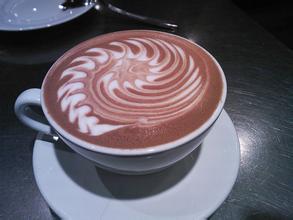Introduction to the quality of Katim Coffee in Yunnan Province by description of taste and flavor
Katim Coffee Bean Flavor Description
The annual average temperature is 19~21℃, the accumulated temperature of ≥10℃ is greater than 6800℃, the average temperature of the coldest month is>11.5℃, the absolute minimum temperature is above 1℃, the average temperature of the coldest month is ≥ 11.5 ℃, the month with average monthly temperature ≤13℃ is more than two months, the extreme minimum year is above 0℃, and the area with-1℃ or temporary-2℃ appears in some years. Below 1200m above sea level, annual rainfall ≥ 1100mm ; fertile loam soil is better, loose soil, good drainage, PH value 6~6.5, slope less than 25° sunny slope gentle slope land, terrace planting, avoid planting in cold air easy to deposit concave land.
forest land reclamation
Coffee is a long-term cash crop. Woodland reclamation must be planned from a long-term perspective. Roads, sheds and fertilizer pools must be designed before reclamation. When forest land is reclaimed, shade trees should be reserved, so that 30-40% of coffee forest land after planting will be shaded, and then adjusted to 20-30%. In planning and design, planning and reclamation of horizontal terraced fields must be done well. This is the primary work of soil and water conservation, and it is also an important work to bring convenience to field management after planting. Trenching and trenching, with the specification of upper opening width × depth × bottom width 60×50×40cm, cultivated from November to the end of March of the following year
The results of trial planting in different ecological areas showed that if the high yield cultivation techniques were followed, higher yield would be obtained. The average yield per mu was more than 150 kg, and the small area could reach more than 400 kg.
1. The state-owned Lujiang Farm in Baoshan City was planted in March 1991 with an area of 12.6 mu. There was no shade and irrigation once in dry season. The level of management and fertilization was medium. The fruit was produced in 1993. The average yield per mu in 1993/94 was 75 kg. In 1994/95, the average yield per mu was 350 kg. In 1995/96, the average yield per mu was 225 kg. The average yield per mu in three years was 217 kg. The yield was 36% higher than that of Tibika and Bobang.(The average yield per mu of Tibika and Bobang is 160 kg).
2. Dehong Institute of Tropical Agricultural Sciences, Yunnan Province, planted 30 mu in 1991, irrigated without shade and water, with medium fertilization and management level. The average yield per mu in 93/94 was 304.3 kg, 294 kg in 94/95, 222.5 kg in 1995/96, and 273.6 kg per mu in three years. The yield was 82% higher than that of S288 (S288 average yield per mu was 150 kg).
3. Ninger County Coffee Company planted 50 mu coffee base in July 1998. The site environment was not shaded, the management level was medium, the fertilizer level was low, but the soil fertility was high. The fruit began to bear in 2000. The average yield per mu in 2001/2002 was 285 kg, the average yield per mu in 2002/2003 was 340 kg, the average yield per mu in 2003/2004 was 293 kg, and the average yield per mu in three years was 306 kg. The yield is 53% higher than PT and 91% higher than P4 (PT average yield is 200 kg/mu, P4 average yield is 160 kg/mu).

Important Notice :
前街咖啡 FrontStreet Coffee has moved to new addredd:
FrontStreet Coffee Address: 315,Donghua East Road,GuangZhou
Tel:020 38364473
- Prev

Introduction to the characteristics of grinding degree of Ethiopian coffee bean name manor producing area flavor description treatment method
Ethiopian coffee bean flavor description method introduces Ethiopia, known as the birthplace of coffee, which has a history of coffee origin and traditional agricultural cultivation techniques. It is said that the English word coffee also comes from the place name kaffa in Ethiopia. Legend has it that around 900 AD, a shepherd in the Cafa region of Ethiopia was grazing in the mountains.
- Next

Introduction to the Flavor and Taste of Coffee beans in Honduras introduction to the Variety characteristics of Manor Origin
Honduran coffee beans do not have very distinct characteristics, but the overall taste is rich and balanced is its biggest feature. In detail, it has a medium or shallow acidity, which is obvious but not strong. Sometimes with a slight floral or fruity aroma (generally speaking, beans from different producing areas and at different elevations have different flavors) slightly bitter
Related
- Detailed explanation of Jadeite planting Land in Panamanian Jadeite Manor introduction to the grading system of Jadeite competitive bidding, Red bid, Green bid and Rose Summer
- Story of Coffee planting in Brenka region of Costa Rica Stonehenge Manor anaerobic heavy honey treatment of flavor mouth
- What's on the barrel of Blue Mountain Coffee beans?
- Can American coffee also pull flowers? How to use hot American style to pull out a good-looking pattern?
- Can you make a cold extract with coffee beans? What is the right proportion for cold-extracted coffee formula?
- Indonesian PWN Gold Mandrine Coffee Origin Features Flavor How to Chong? Mandolin coffee is American.
- A brief introduction to the flavor characteristics of Brazilian yellow bourbon coffee beans
- What is the effect of different water quality on the flavor of cold-extracted coffee? What kind of water is best for brewing coffee?
- Why do you think of Rose Summer whenever you mention Panamanian coffee?
- Introduction to the characteristics of authentic blue mountain coffee bean producing areas? What is the CIB Coffee Authority in Jamaica?

